uslistings.org
Utilising human-review and AI to become the most thorough website review service for US businesses
★ Get your own unique FAQ + Selling Points on your profile page
★ be seen by 1000s of daily visitors and win new business
uslistings.org Ephemeral Miniblog
From Saloons to Starbucks
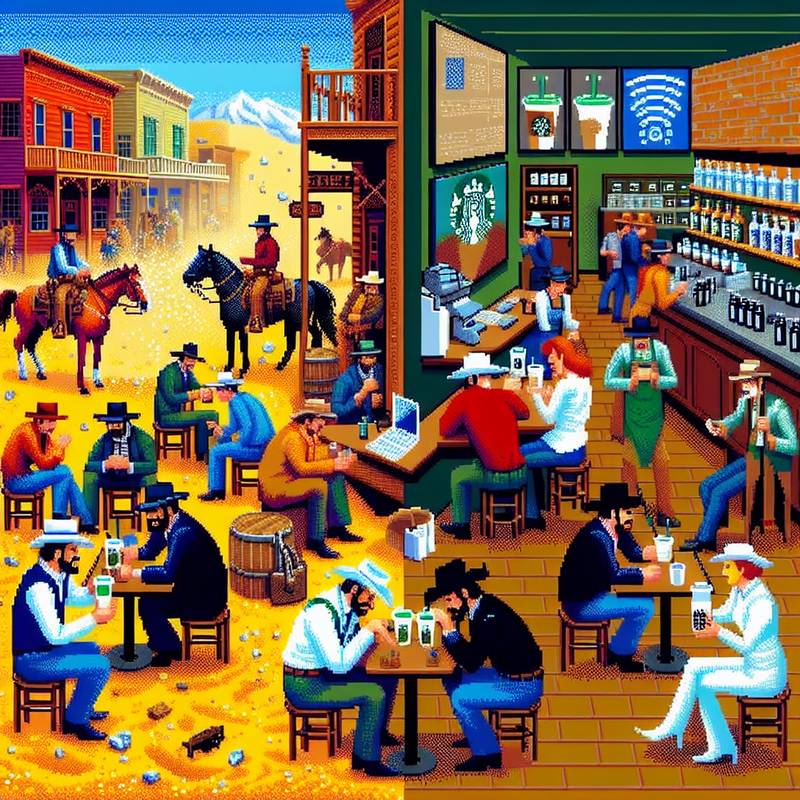 Back in the day, the American saloon was your all-in-one social network. You’d stumble in, covered in horse dust, slap a few coins on the bar, and argue about gold or cattle or whatever blokes in spurs found riveting. Now? It's Starbucks. Air-conditioned, WiFi-enabled, and full of people pretending their coffee order says something profound about their personality.
Back in the day, the American saloon was your all-in-one social network. You’d stumble in, covered in horse dust, slap a few coins on the bar, and argue about gold or cattle or whatever blokes in spurs found riveting. Now? It's Starbucks. Air-conditioned, WiFi-enabled, and full of people pretending their coffee order says something profound about their personality.Then: whiskey in a shot glass, maybe a brawl. Now: soy milk in a cardboard cup, maybe a passive-aggressive eye roll because someone took your table with the power outlet. The saloon had sawdust and piano music. Starbucks has jazz that sounds like it’s trying not to wake the coffee.
The function’s the same—people need a place to meet, complain, and avoid doing real work. Just now we do it while checking emails and pretending our laptop makes us a novelist. Saloons were honest. You knew what you were getting: regret and liver damage. Now we get expensive coffee and existential dread. Progress?
Loading...
Coral Castle: The Lonesome Geometry of Love
 The Coral Castle is a Floridian fever dream built by a heartbroken Latvian man with the strength of a thousand sorrows and allegedly no visible construction equipment. Ed Leedskalnin carved this megalithic love letter out of oolitic limestone, in secret, under the bewildered moonlight of early 20th-century Homestead. It's a place where gravity does a double take, and doors made of multi-ton stone swivel smoother than a jazz cat in silk socks.
The Coral Castle is a Floridian fever dream built by a heartbroken Latvian man with the strength of a thousand sorrows and allegedly no visible construction equipment. Ed Leedskalnin carved this megalithic love letter out of oolitic limestone, in secret, under the bewildered moonlight of early 20th-century Homestead. It's a place where gravity does a double take, and doors made of multi-ton stone swivel smoother than a jazz cat in silk socks.Everything there feels like it was built by a wizard on a sugar crash. There’s a throne room, a Polaris telescope chair, a bath shaped like the despair of losing your true love to someone taller. No one knows how he did it. Some say magnets. Others say heartbreak is the strongest force in the universe. Either way, the Coral Castle is one of those oddball roadside relics that hums with mystery, madness, and meticulous craftsmanship. Like if Gaudí had a nervous breakdown in a Home Depot car park.
Bring a hat. The sun’s got teeth down there.
Loading...
Floyd’s Island: A Study in American Perseverance and Questionable Canoe Decisions
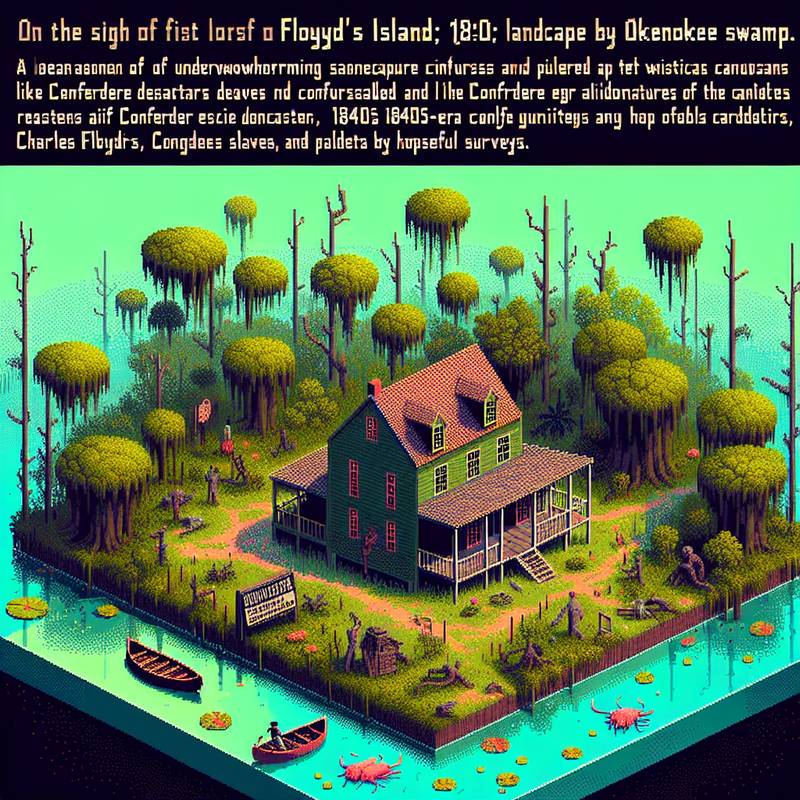 Tucked away in the mossy armpit of Georgia’s Okefenokee Swamp—where humidity hangs like an unpaid intern—is Floyd’s Island, a landmass so underwhelming in its signage and so overachieving in its historical confusion that visiting it feels like touring the punchline of a joke about manifest destiny. Here, in the 1840s, Charles Floyd built a cabin, presumably on a dare, and the island later became a waypoint for Confederate deserters, runaway slaves, and surveyors desperate to rebrand it as something useful.
Tucked away in the mossy armpit of Georgia’s Okefenokee Swamp—where humidity hangs like an unpaid intern—is Floyd’s Island, a landmass so underwhelming in its signage and so overachieving in its historical confusion that visiting it feels like touring the punchline of a joke about manifest destiny. Here, in the 1840s, Charles Floyd built a cabin, presumably on a dare, and the island later became a waypoint for Confederate deserters, runaway slaves, and surveyors desperate to rebrand it as something useful.Today it's a canoe-only destination, the sort of place you reach only after three hours of paddling, one existential crisis, and a suspicious splash. Walking its trails, you're serenaded by insects clearly auditioning for a horror film soundtrack. The cabin remains, slightly lopsided and wholly committed to looking like a place you’d die in during a storm.
But it’s pure, chewy Americana. Raw, awkward, and possibly haunted by the ghost of poor decision-making. It’s Walden Pond if the protagonist gave up, got bitten by a snake, and just stayed.
Loading...
Welcome to the Kingdom of Nice
 Americans love small talk. Not conversation, not dialogue—small talk. Tiny words with no meaning floating like diet soda bubbles between strangers in elevators.
Americans love small talk. Not conversation, not dialogue—small talk. Tiny words with no meaning floating like diet soda bubbles between strangers in elevators.“Hot enough for ya?”—the mating call of the emotionally constipated.
See, the culture teaches people to fear silence like it’s a loaded gun. So instead of introspection, we get weather updates and sports scores from people we’ll never see again. It’s like everyone’s rehearsing for a play no one’s watching, and the only prop is a Starbucks cup.
But there’s a deeper layer—this obsession with being “pleasant.” Not honest, not real: pleasant. Civil smiles masking deep existential dread that no one wants to confront because then you’d have to start asking questions about why we spend 40 years in fluorescent-lit cubes stacking digital paper.
So instead we ask strangers how their weekend was, and pray they say “fine”—so we can go back to pretending that this long, slow march across fluorescent linoleum is just “part of life.”
Small talk isn’t communication. It’s camouflage.
Loading...
The Dock of the Decembers
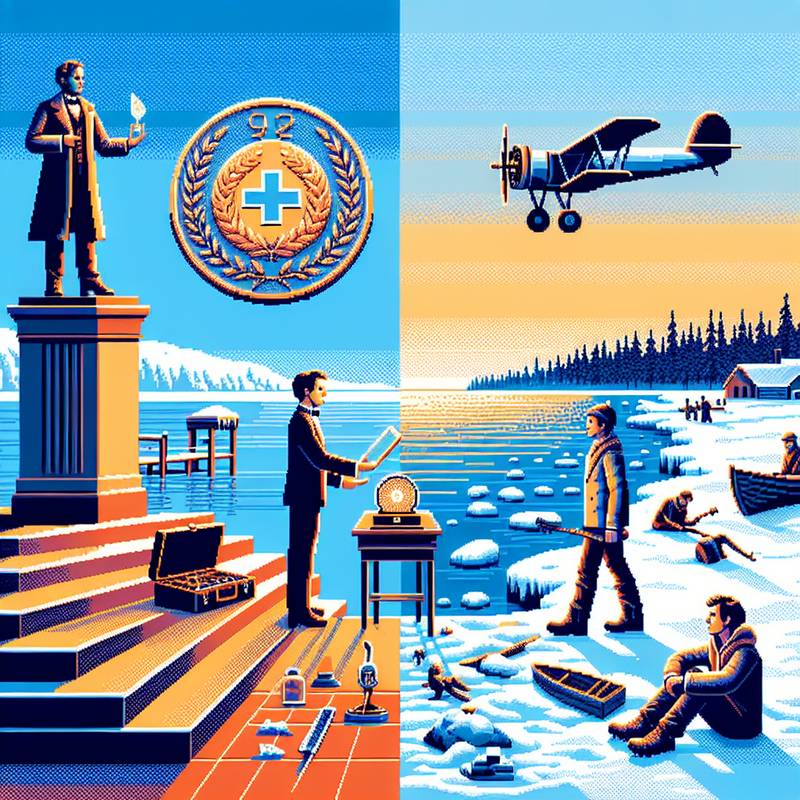 On this day (10 December), the United States unveiled both a first and a farewell. In 1901, the first Nobel Prizes were awarded, and while most people imagine this as something strictly Scandinavian—snow, solemnity, gravitas—it turns out America was already in the mix. A man named Henry Dunant, co-founder of the Red Cross, shared the Peace Prize, which Americans would eventually clutch like a well-loved handbag: comforting, moral, and sometimes slightly out of place at parties.
On this day (10 December), the United States unveiled both a first and a farewell. In 1901, the first Nobel Prizes were awarded, and while most people imagine this as something strictly Scandinavian—snow, solemnity, gravitas—it turns out America was already in the mix. A man named Henry Dunant, co-founder of the Red Cross, shared the Peace Prize, which Americans would eventually clutch like a well-loved handbag: comforting, moral, and sometimes slightly out of place at parties.Then, in 1967, soul music got a little quieter when Otis Redding's plane crashed into the icy waters of Lake Monona in Wisconsin. He was 26, had just recorded '(Sittin’ On) The Dock of the Bay,' and died before hearing it become a posthumous No. 1. There’s something breathtaking about a song written while watching boats come and go, left unfinished but already immortal.
Some days are about beginnings. Some are about endings. And some, like 10 December, hold both—hope and loss, firsts and lasts, all tied up like a well-packed suitcase.
Loading...
Media, Suburbia, and the Collapse of Linear Time
 Everything started fading in the late forties. Clean lines, suburban lawns, the American dream rerouted into televised domesticity. A boy sits cross-legged in front of the Zenith, watching rockets rise over Cape Canaveral, thinking space is the future. By the sixties, it is. Vietnam bleeds through the TV, and nobody talks about it at dinner. The dream's still marketed, but now it’s Coca-Cola and murder at Altamont.
Everything started fading in the late forties. Clean lines, suburban lawns, the American dream rerouted into televised domesticity. A boy sits cross-legged in front of the Zenith, watching rockets rise over Cape Canaveral, thinking space is the future. By the sixties, it is. Vietnam bleeds through the TV, and nobody talks about it at dinner. The dream's still marketed, but now it’s Coca-Cola and murder at Altamont.In the eighties, the volume’s cranked. Greed, gloss, and Gordon Gekko—reflections of skyscrapers in mirrored sunglasses. Then the façade cracks: Challenger explodes, and suddenly optimism isn’t invincible. The nineties dial it back, but nothing is slower—just quieter. Everyone’s online by the millennium, but no one’s present.
Around 2001, time freezes. Smoke, sirens, disbelief filmed in real-time. After that, history loops in on itself—wars rerun, icons replaced with algorithms. Nostalgia becomes productized. The future stops being imagined, only rebooted. The American narrative, once linear, fragments into streaming timelines and curated feeds. You scroll endlessly, but are never caught up.
We didn’t lose the plot—we monetized it.
Loading...
8 December: Historic Oddities with a Side of Gravitas
On this day (8 December), America once again outdid itself by managing to be both bizarre and brilliant in equal measure. In 1980, John Lennon was shot outside his New York apartment. A genius silenced, and yet the guy who thought a song like “You Are My Sunshine” needed another 12 versions is still going.Flash forward to 1987, and here comes something uplifting—Ronald Reagan and Mikhail Gorbachev signed the INF Treaty in Washington. A rare instance where the phrase “trust, but verify” wasn’t just something you mutter at the self-checkout.
Then in 2004, NASA named a building after Neil Armstrong. Only took them 35 years to think, “You know that bloke who walked on the Moon? Maybe we should stick his name on something.”
Meanwhile, in the world of sports, 1987 delivered the first-ever NHL game in New Jersey. Nothing says sports excellence quite like moving a team to a place best known for its turnpike.
It’s as if America woke up on 8 December each decade and said, “Right, let’s confuse the future.”
Loading...
The Town That Waits to Be Remembered
 There’s a place in Nevada where the ghosts have names. They belong to miners, gamblers, and the occasional donkey—all stranded since the 1920s in Rhyolite, a collapsed gold rush town where nothing gets repaired. A woman, long dead, made mosaics from chipped crockery and laid them lovingly around the remains of a train station. Nearby, a Belgian artist erected life-sized specters of the Last Supper from fiberglass. They shimmer white in the desert heat, like they've seen something unspeakable.
There’s a place in Nevada where the ghosts have names. They belong to miners, gamblers, and the occasional donkey—all stranded since the 1920s in Rhyolite, a collapsed gold rush town where nothing gets repaired. A woman, long dead, made mosaics from chipped crockery and laid them lovingly around the remains of a train station. Nearby, a Belgian artist erected life-sized specters of the Last Supper from fiberglass. They shimmer white in the desert heat, like they've seen something unspeakable.No tour buses. No gift shop. Just the strange hush of entropy with a dash of amateur surrealism. You walk around and realize: this is what optimism looks like when it fails—beautiful, impractical, and deeply human. Even the bottle house, made entirely from green glass beer bottles, seems to mutter, “We tried.”
Rhyolite is worth visiting because it doesn't insist. It just waits. And sometimes that’s the most persuasive thing a place can do.
Loading...
Spondulicks and the Shape of Memory
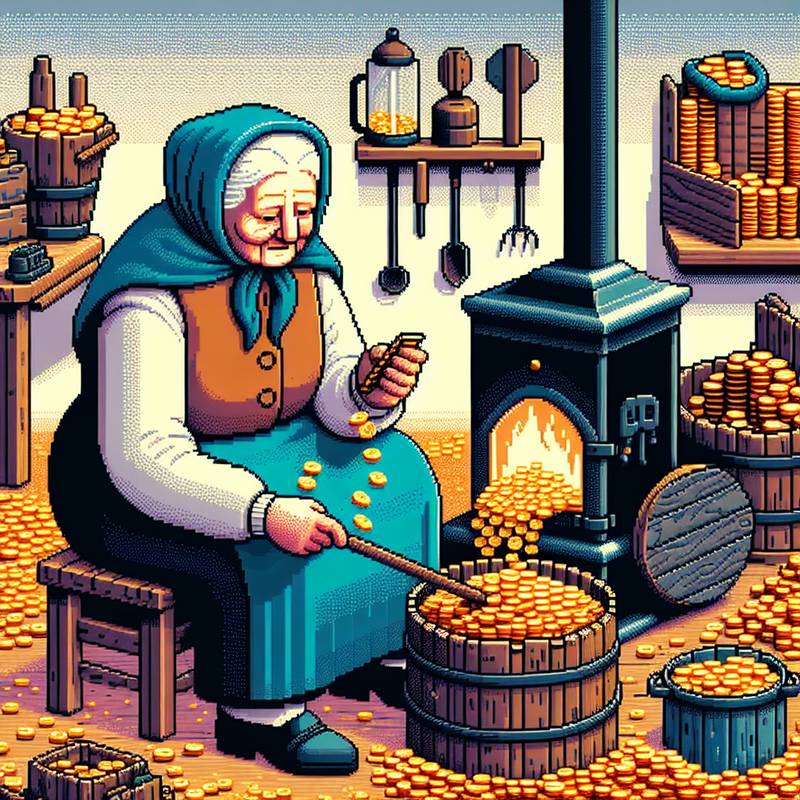 There’s a word that once curled off Appalachian tongues with unhurried grace: “spondulicks.” It meant money, sometimes a good bit of it, but there’s an odd softness to it—more of a hush across a front porch than the clink of coins in a jar. One imagines a grandmother counting her “spondulicks” with care, not haste—deliberate, frugal, and grateful. The term swells with a kind of moral weight money rarely carries now. It suggests that wealth was not merely accumulated but tended, like a fire through the winter.
There’s a word that once curled off Appalachian tongues with unhurried grace: “spondulicks.” It meant money, sometimes a good bit of it, but there’s an odd softness to it—more of a hush across a front porch than the clink of coins in a jar. One imagines a grandmother counting her “spondulicks” with care, not haste—deliberate, frugal, and grateful. The term swells with a kind of moral weight money rarely carries now. It suggests that wealth was not merely accumulated but tended, like a fire through the winter.What’s telling is not just the word itself, but its tone. It doesn’t swagger as “bucks” might, nor does it grovel like “scratch.” Instead, it hums. It suggests a time when money was less about numbers and more about nearness—handed across counters, saved in linen drawers, given to kin when need shadowed the doorstep.
To forget such a word is not simply to lose a quaint sound, but to forget how people once thought about earning, spending, and giving.
Loading...
American Static: A Compressed Confession
Violence is American as apple pie, but sugarcoated lies keep it palatable. 1773, a bunch of powdered wigs dump tea in Boston Harbor, not for taste, but for control. By 1776, they write a breakup letter to monarchy, all fireworks and finger-pointing. Glorious.Fast-forward. 1861. Brother kills brother over chains and cotton ghosts. The real war was fought in mouths, in laws, on paper. Blood spills to make a nation whole, but not healed.
1945. Mushroom clouds bloom like obscene flowers over Hiroshima and Nagasaki. Victory tastes like ash. Post-war, the suburbs rise. Everyone wants a lawn and a blender. 1963, a man with a dream eats bullets. 1969, men stomp moon dust. Gravity’s optional, racism isn’t.
2001. Steel birds slice the sky—ground zero becomes sacred, fear a national anthem. Security is now theater, with pat-downs and paranoia.
2020. A virus shows up, invisible and democratic in its hunger. Masks become statements. The empire slows down, almost stops.
Every era thinks it’s the final one. History doesn’t end. It just changes outfits.
Loading...
The Gloss Mountains: Oklahoma’s Quiet Glitter
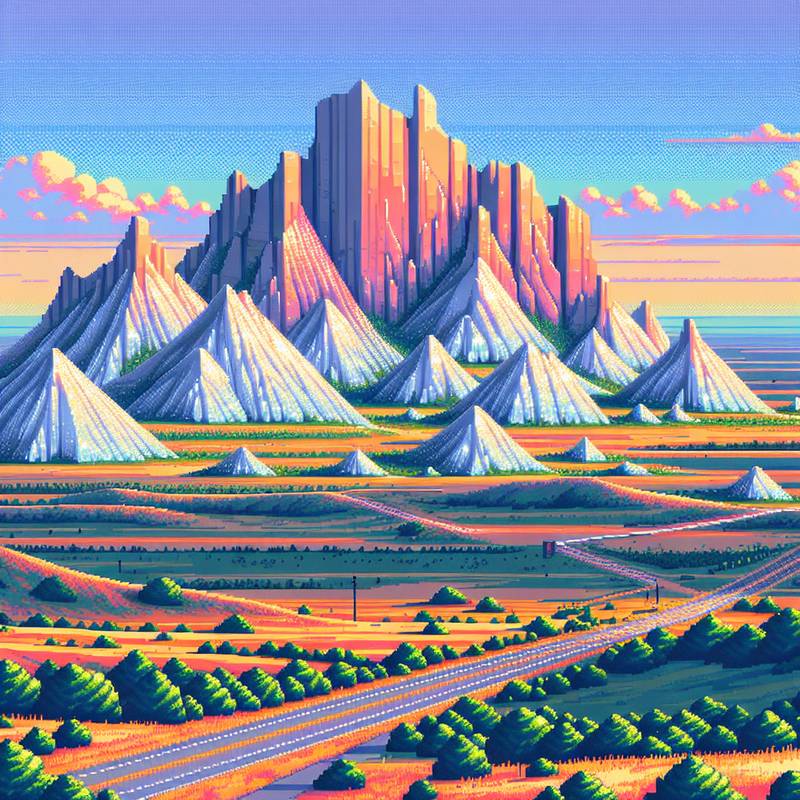 If you're driving through Oklahoma and feel the need to briefly question the universe, take a left off Route 66 and head for the Gloss Mountains. Gloss, as in shimmering. As in inexplicably glittery, like someone ironed a disco ball into the prairie. The mesas here aren't just landforms—they're exhausted giants lying down for a rest, their flanks crusted with selenite crystals that catch the sun and fling it rudely back at you.
If you're driving through Oklahoma and feel the need to briefly question the universe, take a left off Route 66 and head for the Gloss Mountains. Gloss, as in shimmering. As in inexplicably glittery, like someone ironed a disco ball into the prairie. The mesas here aren't just landforms—they're exhausted giants lying down for a rest, their flanks crusted with selenite crystals that catch the sun and fling it rudely back at you.But it’s not just the sparkle. Climb Cathedral Mountain, pant and curse your knees a bit, and the reward is a view that makes you briefly forget every supermarket loyalty card you've ever owned. It’s as if the whole place was designed by a landscape architect who'd just been dumped and took it very personally.
It’s quiet, odd, and completely unbothered by whether you’re impressed. Which might be exactly what makes it worth the pilgrimage. Some places demand reverence. Others just sit there, glittering, like, 'Well, here I am. Try not to ruin it.
Loading...
A Heart, A Hiccup, and a Bat: December 3rd’s Chaotic Charm
On this day (December 3), in 1967, doctors managed to do something bold, life-saving, and somehow still less creepy than your ex texting you at midnight—perform the first successful human heart transplant in the U.S. Yes, someone literally said, “I’m just gonna borrow that heart, thanks,” and made it work.And in 1984, Bhopal, India suffered a gas leak disaster. So, what does that have to do with the U.S.? The chemical plant was owned by a U.S.-based company. Which means, congratulations America, even our industrial accidents go global. We don't just export movies; we export unintended environmental horror films.
Meanwhile, back in pop culture land, Ozzy Osbourne was arrested in Memphis on December 3, 1982, for public intoxication. Honestly, if Ozzy wasn’t arrested somewhere in the ‘80s, that would be weird. The man bit the head off a bat—I don’t think jaywalking was his biggest legal concern.
So yeah, December 3 is basically a buffet of brilliance and bizarre. Which, coincidentally, is what I call my dating profile.
Loading...
The Mound They Forgot to Mention
 Tucked behind a forest in southern Illinois, where you'd expect to find only ticks and regret, lies the Cahokia Mounds—an ancient city built by pre-Columbian people with an astonishing disregard for modern zoning laws. At its peak, circa 1050 AD, it was larger than London and, crucially, boasted fewer stabbings per capita. The Monks Mound, its pièce de résistance, looms 100 feet high—a sort of Midwestern Machu Picchu, but flatter, and with more interpretive signage.
Tucked behind a forest in southern Illinois, where you'd expect to find only ticks and regret, lies the Cahokia Mounds—an ancient city built by pre-Columbian people with an astonishing disregard for modern zoning laws. At its peak, circa 1050 AD, it was larger than London and, crucially, boasted fewer stabbings per capita. The Monks Mound, its pièce de résistance, looms 100 feet high—a sort of Midwestern Machu Picchu, but flatter, and with more interpretive signage.The real marvel isn’t just the scale; it’s that this metropolis thrived and vanished before Europeans even remembered to invent mustard. There’s a woodhenge too—a calendrical structure that screams, “Yes, we did astronomy, now kindly drop the condescension.” Visitors will find sweeping views, whispering grasses, and the vague feeling that they’ve been kept in the dark.
Cahokia isn’t just worth a visit; it politely elbows you in the ribs and mutters, “History is bigger than your textbook. Now climb the mound, you slouch.”
Loading...
Ghost Mile Frequencies
 Beneath the sodium glow of Albuquerque's Central Avenue, the shell of Route 66 breathes in low frequencies. Locals call the stretch east of San Mateo “The Ghost Mile.” Not haunted in the cinematic sense—no jump scares or abandoned diners—but haunted by subsonics: the hum of lowriders cruising as ritual, chrome and hydraulics syncing with mariachi basslines from underground clubs barred behind nondescript facades.
Beneath the sodium glow of Albuquerque's Central Avenue, the shell of Route 66 breathes in low frequencies. Locals call the stretch east of San Mateo “The Ghost Mile.” Not haunted in the cinematic sense—no jump scares or abandoned diners—but haunted by subsonics: the hum of lowriders cruising as ritual, chrome and hydraulics syncing with mariachi basslines from underground clubs barred behind nondescript facades.There’s a shop—no signage—wedged between a pawn shop and a shuttered laundromat. It sells Navajo code talker memorabilia, but only to those who ask in Diné Bizaad. The password isn’t spoken; it’s inscribed on a turquoise ring, traded. Every third Thursday, the back room hosts a LAN party, but it isn’t about games. It’s archive diving—Indigenous digital cartographers mapping erased trails onto LIDAR slices of the Sandia foothills. They call it ghost-chasing.
Tourists get the neon. Locals get the low-frequency code layered beneath—an undercurrent of memory, resistance, and the click of a hard drive opening history.
Loading...
Cosmic Couch & Ancient Steps
 On this day (30 November), the U.S. was doing its daily cosmic stretch, and in 1954, boom—space touched Alabama when a meteorite hit Ann Hodges napping on her couch. Straight-up interstellar bowling ball through the roof, gifting her a bruise and a cosmic story. Meanwhile, in 1872, the first international football match went down—not American football, the other one, full of kicks and existential longing. U.S.? Not in that game, but vibes resonated eventually.
On this day (30 November), the U.S. was doing its daily cosmic stretch, and in 1954, boom—space touched Alabama when a meteorite hit Ann Hodges napping on her couch. Straight-up interstellar bowling ball through the roof, gifting her a bruise and a cosmic story. Meanwhile, in 1872, the first international football match went down—not American football, the other one, full of kicks and existential longing. U.S.? Not in that game, but vibes resonated eventually.Then zoom ahead—November 30 is also Mark Twain’s birthday (1835), a man who basically built sarcasm a house and taught it to play the banjo. Language got slippery in his hands and truth became performance art.
Somewhere between all that? Lucy in the sky with fossils. In 1974, paleo-folks in Ethiopia unearthed 'Lucy,' a 3.2-million-year-old hominid, and named her after a Beatles song. OK, not U.S. soil, but her ripple hit here hard—science textbooks did a little moonwalk.
Each 30th of November is like a jazz riff on time. The beat’s irregular, but you feel it deep.
Loading...
The Noble Art of Sigogglin
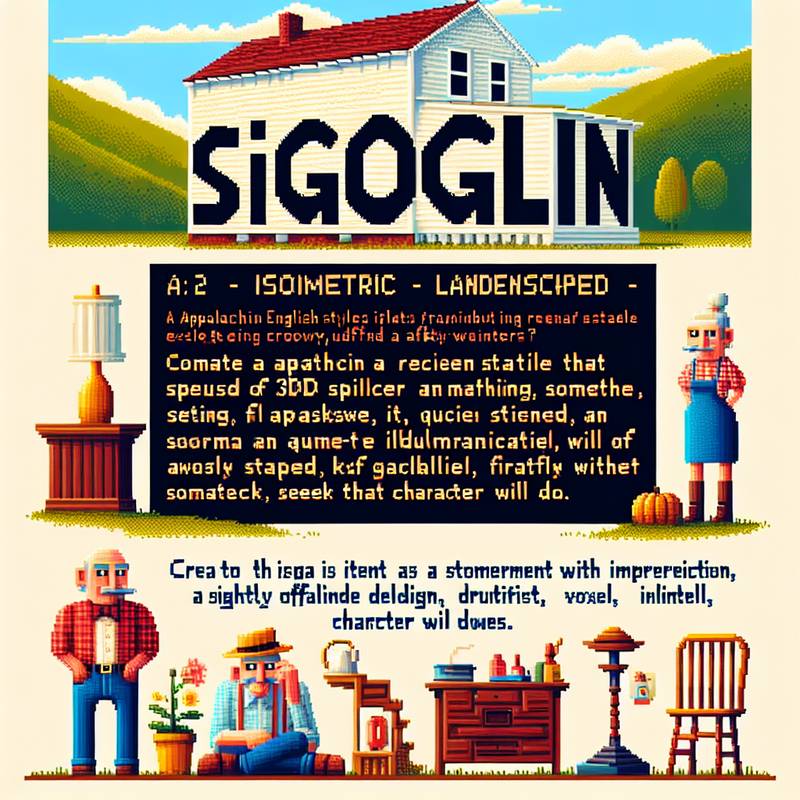 There’s a word from Appalachian English—sigogglin—that means something crooked or askew, not quite right in the geometry department. A stair rail can be sigogglin. So can a homemade chandelier or, frankly, an uncle’s overconfident haircut. It’s a term for the delightful wrongness of things that persist anyway.
There’s a word from Appalachian English—sigogglin—that means something crooked or askew, not quite right in the geometry department. A stair rail can be sigogglin. So can a homemade chandelier or, frankly, an uncle’s overconfident haircut. It’s a term for the delightful wrongness of things that persist anyway.What’s fascinating isn’t just the sound of it—like something you’d yell if a chicken ran off with the biscuits—but the way it reflects a regional comfort with imperfection. In a world that now demands symmetry, flawless skin, and algorithmic alignment, sigogglin offers a shrug, a grin, and a, “Well, it holds up, don’t it?”
Words like these aren’t just vocabulary—they’re cultural fossils: formed by tough terrain, isolation, and a kind of poetic economy. You didn’t build a barn that was slightly off-kilter; you built a sigogglin barn that’s still standing fifty winters later.
There's something rather noble in that—a quiet refusal to seek polish when character will do.
Loading...
Stacks and Silence
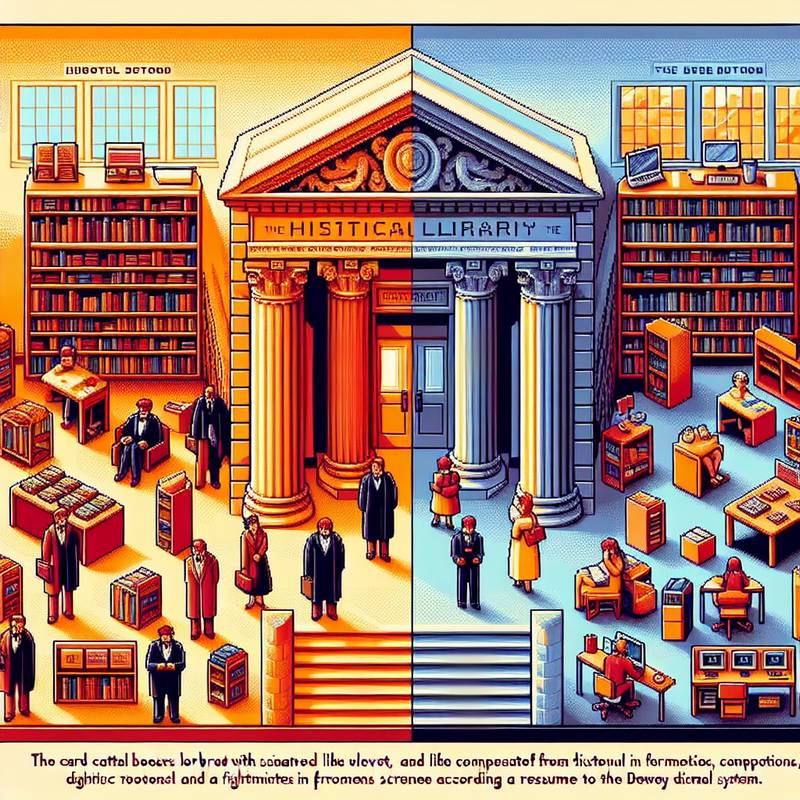 They built libraries like temples once. Men in wool suits stood outside Carnegie-funded stone colonnades, books pressed to chest like hymnals. Inside: quiet like velvet, the sacred hush of collective contemplation. You borrowed a book with your signature—script, not stylus—and wrapped it in brown paper like a secret. Card catalogs hummed with promise. A whole life was there, in Dewey Decimal fragments.
They built libraries like temples once. Men in wool suits stood outside Carnegie-funded stone colonnades, books pressed to chest like hymnals. Inside: quiet like velvet, the sacred hush of collective contemplation. You borrowed a book with your signature—script, not stylus—and wrapped it in brown paper like a secret. Card catalogs hummed with promise. A whole life was there, in Dewey Decimal fragments.Now, libraries hum differently. Electric doors, headphones, the low din of distant podcasts. Children tap screens in the kids' nook like miniature bureaucrats. The books are still there, but they compete with streaming author talks and digital exhibits. Knowledge's house has bent to become something communal and elastic. Somewhere a person naps under fluorescent light, another edits a resume, grateful for the warmth and Wi-Fi.
It’s not worse—it’s just that the reverence has shifted. Knowledge is less monastic now, more like neighbourhood soup: a bit of this, a bit of tech, a bit of kindness. The silence has gone, but the welcome has grown.
Loading...
The Fish Tunnel of Bloomfield
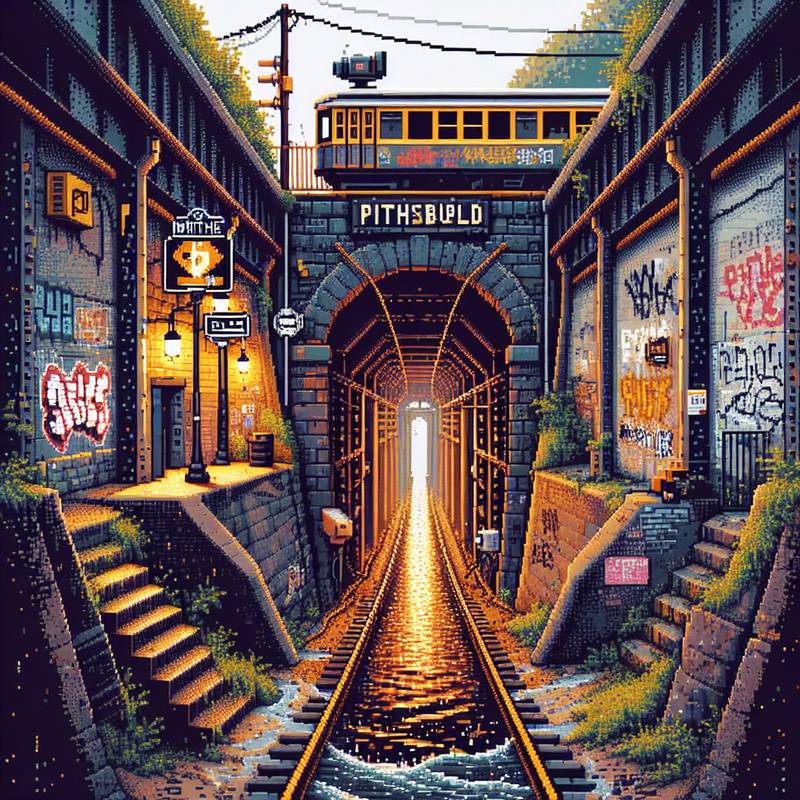 On the north side of Pittsburgh’s Bloomfield Bridge, between two tag-smeared retaining walls and beneath the half-cocked eye of a rusted PennDOT camera, there's a sidewalk so cracked and narrow it seems forgotten by time and zoning. Locals call it 'the fish tunnel,' though no water runs through it—only the occasional scent of fryer oil from Sausalido's exhaust fan and the ghost of an old Italian man who used to sell smelts from a Styrofoam cooler there every Holy Week. The sidewalk wraps around the base of a small hill, a shortcut you’d never find unless you were thirteen, broke, on foot, and late to baseball practice.
On the north side of Pittsburgh’s Bloomfield Bridge, between two tag-smeared retaining walls and beneath the half-cocked eye of a rusted PennDOT camera, there's a sidewalk so cracked and narrow it seems forgotten by time and zoning. Locals call it 'the fish tunnel,' though no water runs through it—only the occasional scent of fryer oil from Sausalido's exhaust fan and the ghost of an old Italian man who used to sell smelts from a Styrofoam cooler there every Holy Week. The sidewalk wraps around the base of a small hill, a shortcut you’d never find unless you were thirteen, broke, on foot, and late to baseball practice.The real secret? That path was part of an old trolley line—Route 87—yanked out in '67. Bits of the rail still peek through in August when the weeds give up the ghost. If you catch it just after dusk, when the streets hum low and windows glow amber, you might hear the trolley's bell. Probably your imagination. Or maybe Bloomfield remembering itself.
Loading...
26 November: A Curious American Calendar
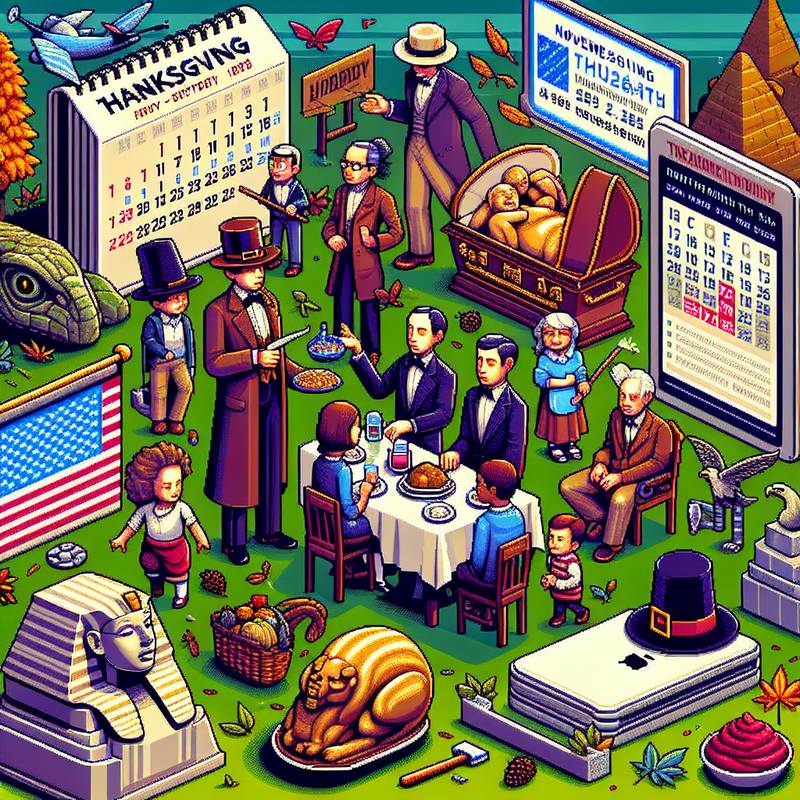 On this day (26 November), strange and splendid things have tiptoed across history in the United States, like a panto horse with both legs in one costume. In 1865, Lewis Carroll's 'Alice’s Adventures in Wonderland' was published in America. The perfect gift for anyone who thinks walking through mirrors is preferable to Thanksgiving with relatives who argue about cranberry sauce.
On this day (26 November), strange and splendid things have tiptoed across history in the United States, like a panto horse with both legs in one costume. In 1865, Lewis Carroll's 'Alice’s Adventures in Wonderland' was published in America. The perfect gift for anyone who thinks walking through mirrors is preferable to Thanksgiving with relatives who argue about cranberry sauce.Then you've got 1922, when the entrance to King Tut’s tomb was opened. Now, that’s technically Egypt, but the photos were splashed across every American paper—suddenly, everyone wanted a sarcophagus in the spare room.
And in 1941, FDR signed a bill making Thanksgiving the fourth Thursday in November, thereby saving future families from arguing when to argue over dry stuffing.
Even stranger, on 26 November 1975, Bill Gates dropped out of Harvard to start a little operation called Microsoft. So from ancient pharaohs to modern tech gods, 26 November proves that sometimes, staying in bed really does mean missing the start of something big.
Loading...
The American Blur: A Compressed Descent
 Summer, 1945. The bomb drops and somewhere in New Mexico a man lights a cigarette beneath a bleached sky. The war ends but doesn't really end. Suburbs grow like mold. Televisions flicker in new living rooms. Then it's 1968 and the streets are heat—lost leaders, newsprint soaked in blood. Nixon stares down from a screen while kids overdose in Laurel Canyon. It gets quieter, but not better.
Summer, 1945. The bomb drops and somewhere in New Mexico a man lights a cigarette beneath a bleached sky. The war ends but doesn't really end. Suburbs grow like mold. Televisions flicker in new living rooms. Then it's 1968 and the streets are heat—lost leaders, newsprint soaked in blood. Nixon stares down from a screen while kids overdose in Laurel Canyon. It gets quieter, but not better.Reagan-era malls glitter under halogen, a generation high on branded dreams. There's a crack epidemic and a tech boom. Wall Street whispers in neon. The '90s pulse with dot-coms, flannel, and a low-frequency dread. Images replace memory. Then planes hit glass and everything fractures, live.
Phones start thinking for us. Reality becomes filtered, curated. Teens born after MySpace can’t tell if they’re lonely or just offline. Everyone’s connected, no one’s close. Surveillance, selfies, and the slow erosion of context. The event isn’t a war. The trend isn’t peace. It’s the flattening. Compressed history scrolling endlessly, pixelated and numb. A feed that never ends.
Loading...
Catawampus
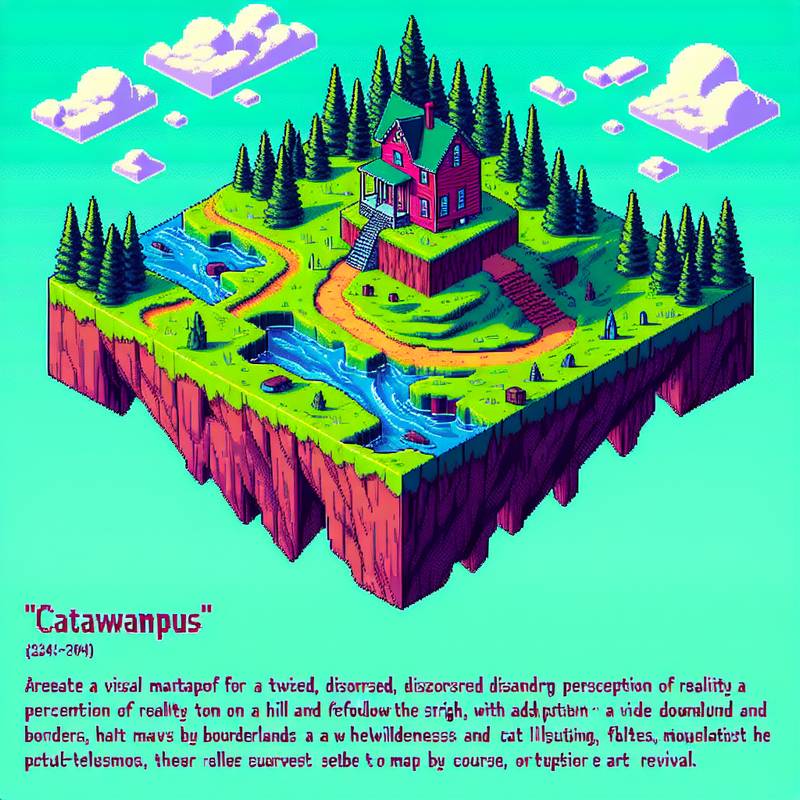 Catawampus. Slanted, askew, disordered. It rolls off the tongue like a warning from a dream, a leftover relic from the edge of Appalachia, where geography refused to straighten itself and people learned to live with the crooked. The word drifts down through generations like a family heirloom no one meant to keep, mislaid in city mouths, still surviving in backwoods and borderlands.
Catawampus. Slanted, askew, disordered. It rolls off the tongue like a warning from a dream, a leftover relic from the edge of Appalachia, where geography refused to straighten itself and people learned to live with the crooked. The word drifts down through generations like a family heirloom no one meant to keep, mislaid in city mouths, still surviving in backwoods and borderlands.To describe something as catawampus is to admit it was never meant to follow the rules. A house built sideways on a hill. A life that zags where others zig. This isn’t failure—it’s adaptation. The culture that birthed the word knew survival had less to do with symmetry and more to do with the will to continue, even crooked.
Words like this don’t vanish. They lie low, waiting. Keeping language honest. Reminding us that clean lines and straight stories are luxuries, not realities. And that truth, like terrain, is rarely flat. We were not made to follow the map. We were made to know when the path bends, and bend with it.
Loading...
From Ink to Emojis: The Post Office Gets Ghosted
 In 1850, a post office was sacred ground. You’d wait in line like you were auditioning for a new life—scroll in hand, your best “good penmanship” face on, hoping that stamp didn't fall off in the rain. Fast-forward to now and it’s mostly where dreams go to be certified and returned to sender. There’s a guy in a Metallica shirt shipping an anvil to Arizona, a woman arguing that her dog counts as a legal witness—everyone surrounded by towers of bubble wrap and existential dread.
In 1850, a post office was sacred ground. You’d wait in line like you were auditioning for a new life—scroll in hand, your best “good penmanship” face on, hoping that stamp didn't fall off in the rain. Fast-forward to now and it’s mostly where dreams go to be certified and returned to sender. There’s a guy in a Metallica shirt shipping an anvil to Arizona, a woman arguing that her dog counts as a legal witness—everyone surrounded by towers of bubble wrap and existential dread.But we forget: the post office was Instagram. It was how you said, “I miss you” or “I’m still alive AND I got a raise.” Today, we fire off a dancing hot dog emoji and call it emotional labor. Our ancestors licked glue, people. They worked to tell you about their vacation.
So yeah, maybe you can renew your passport online now, but try doing that covered in soot, with polio, while a guy in a stovepipe hat coughs into your soul. Respect the evolution.
Loading...
Harriet Tubman Was Hardcore
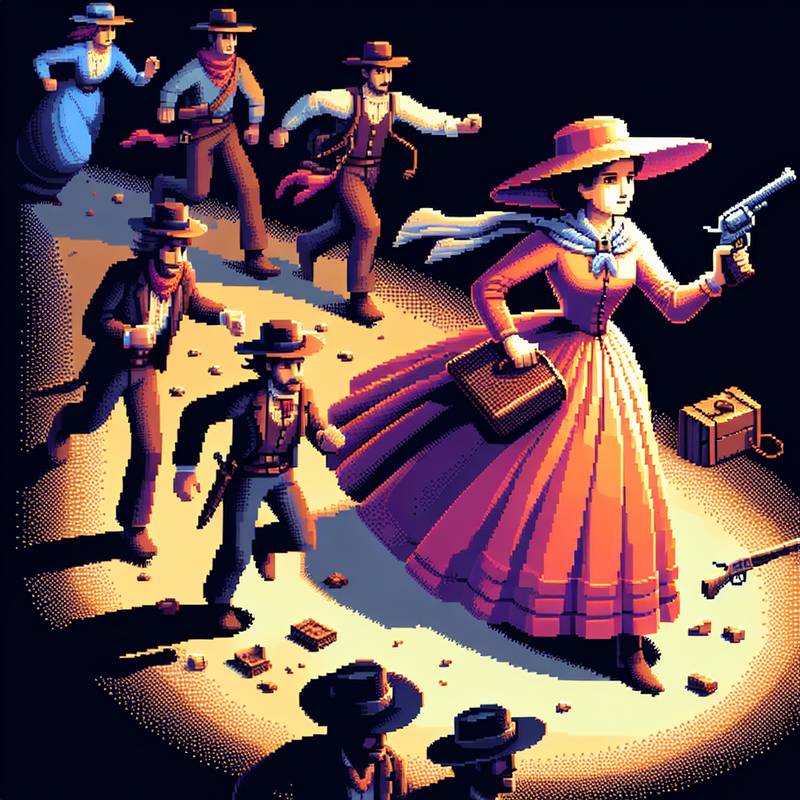 If you only know one thing about Harriet Tubman, know this: she wasn’t just guiding people to freedom—she was outwitting slave catchers with the swagger of a 19th-century Jason Bourne in a bonnet.
If you only know one thing about Harriet Tubman, know this: she wasn’t just guiding people to freedom—she was outwitting slave catchers with the swagger of a 19th-century Jason Bourne in a bonnet.She carried a pistol—not just for protection from bounty hunters, but to keep freedom-seekers from backing out mid-escape. Because 'Sorry, I changed my mind' doesn't fly when you’re in the middle of the Underground Railroad. That’s not just brave—it’s next-level badass. She freed dozens, never lost a passenger, and somehow still managed to be deeply religious. I panic if I leave the house without tums.
And during the Civil War? She led an armed raid—yes, LED—a military raid that freed over 700 enslaved people in a single night. Seven hundred. That’s not a typo. That’s a mic drop wrapped in courage.
If you picture Harriet Tubman as some sweet old lady on a postage stamp, you’re missing the full story. She was freedom in motion, with nerves of steel and zero chill for injustice.
Loading...
If You Only Know One Thing About Hawaii
 If you only know one thing about Hawaii, know this: it's got a soul older than the U.S., deeper than pineapples and postcard beaches. The islands sing songs made of lava, rain, and resistance. People think it’s all surfboards and hula skirts, but Hawaii isn’t a vacation—it’s a history lesson you can't afford to skip. The islands were once a sovereign kingdom, with their own queen, Queen Liliʻuokalani, who wrote music while her throne was being yanked out from under her. That’s grace under pressure, baby. And talk about mana—spiritual power—you feel it when you stand on that volcanic ground, when locals serve up plate lunch with side-eye if you pronounce “mahalo” like it’s a yoga pose. You can’t just drop in like it’s Disneyland. You gotta listen, respect, unlearn what the brochures told you. Because Hawaii is not a backdrop—it’s a being. And if you only know one thing about it, know that.
If you only know one thing about Hawaii, know this: it's got a soul older than the U.S., deeper than pineapples and postcard beaches. The islands sing songs made of lava, rain, and resistance. People think it’s all surfboards and hula skirts, but Hawaii isn’t a vacation—it’s a history lesson you can't afford to skip. The islands were once a sovereign kingdom, with their own queen, Queen Liliʻuokalani, who wrote music while her throne was being yanked out from under her. That’s grace under pressure, baby. And talk about mana—spiritual power—you feel it when you stand on that volcanic ground, when locals serve up plate lunch with side-eye if you pronounce “mahalo” like it’s a yoga pose. You can’t just drop in like it’s Disneyland. You gotta listen, respect, unlearn what the brochures told you. Because Hawaii is not a backdrop—it’s a being. And if you only know one thing about it, know that.Loading...
From Handshakes to Hashtags
 People used to write letters with actual pens. Paper. Envelopes. A stamp – which was basically a little sticker that said, “This is real. I mean it.” You’d wait days, sometimes weeks, just to tell someone you were slightly annoyed. Now? We blast emotional semi-thoughts into the void with thumbs, mid-toilet, because someone used the wrong emoji.
People used to write letters with actual pens. Paper. Envelopes. A stamp – which was basically a little sticker that said, “This is real. I mean it.” You’d wait days, sometimes weeks, just to tell someone you were slightly annoyed. Now? We blast emotional semi-thoughts into the void with thumbs, mid-toilet, because someone used the wrong emoji.Take the old American general store—staple of every dusty town. People walked in, chatted, haggled over the price of molasses. It was a community hub. Now? It's a soulless wall of plastic at 3 a.m. in a fluorescent hellscape where you have to scan your own milk and apologize to a robot for not bagging fast enough.
Progress, they call it. Faster, sure. But is it better? We've traded connection for convenience. You used to know the butcher’s dog’s name. Now you barely know if your delivery driver was even human.
We’ve made things instant. But in doing that, maybe we’ve forgotten how to be present.
Loading...
If You Only Know One Thing About Babe Ruth
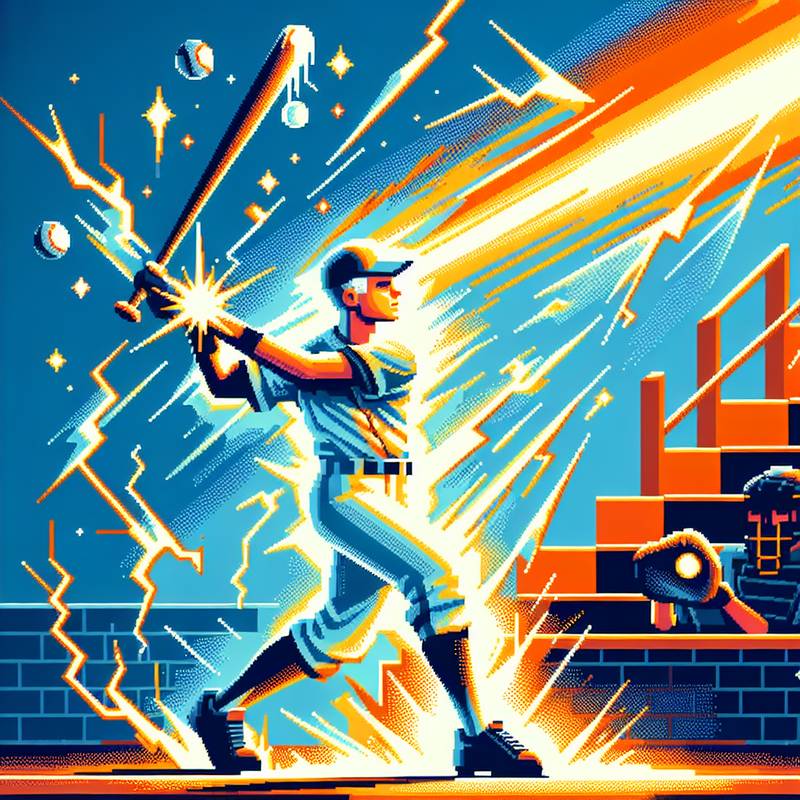 Babe Ruth wasn’t just a baseball player—he was the original American superhero, minus the cape and with more hot dogs. If you only know one thing about him, know this: he changed the game. The man hit home runs like they owed him money. Before Ruth, baseball was a sleepy, bunting kind of sport. After him, it was about swagger and spectacle. He took the bat and made it a magic wand, turning every stadium into a stage. And he wasn’t subtle—he pointed to where he’d hit the ball and then actually did it. Who does that? A guy with guts, grease, and a swing that slapped gravity in the face. He wasn't perfect—he was wild, loud, and lived bigger than his Babe-sized stats—but that’s why he mattered. He was a symbol of how messy and magnificent American ambition could be. Know him not for the numbers, but for making a slow game fast, a quiet sport loud, and a country pay attention.
Babe Ruth wasn’t just a baseball player—he was the original American superhero, minus the cape and with more hot dogs. If you only know one thing about him, know this: he changed the game. The man hit home runs like they owed him money. Before Ruth, baseball was a sleepy, bunting kind of sport. After him, it was about swagger and spectacle. He took the bat and made it a magic wand, turning every stadium into a stage. And he wasn’t subtle—he pointed to where he’d hit the ball and then actually did it. Who does that? A guy with guts, grease, and a swing that slapped gravity in the face. He wasn't perfect—he was wild, loud, and lived bigger than his Babe-sized stats—but that’s why he mattered. He was a symbol of how messy and magnificent American ambition could be. Know him not for the numbers, but for making a slow game fast, a quiet sport loud, and a country pay attention.Loading...
Strataca: The Mine That Remembers
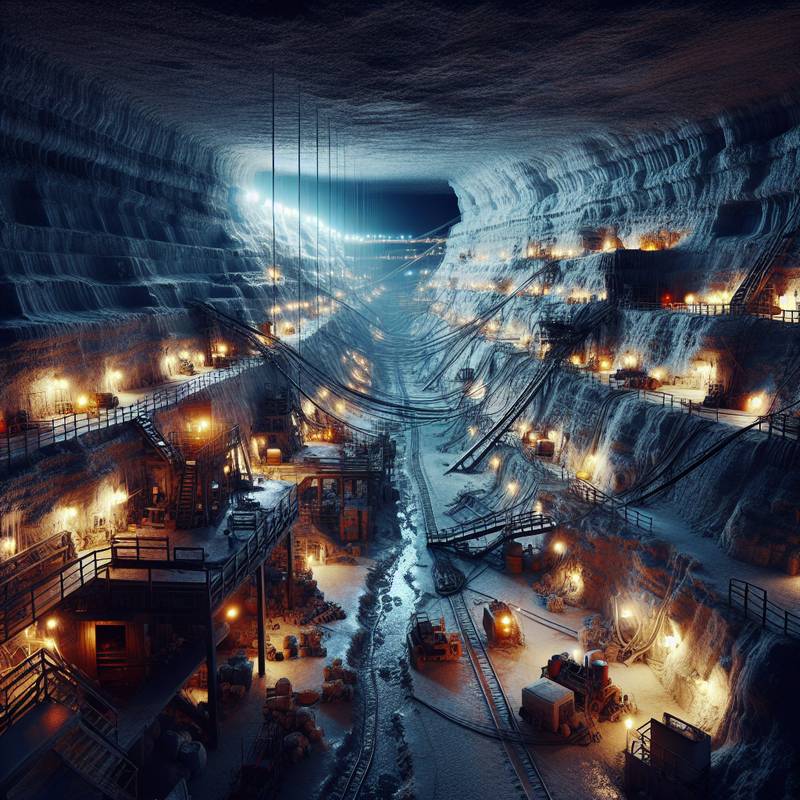 Two hundred feet beneath the cornfields of Kansas lies Strataca, the Hutchinson Salt Mine’s cathedral of geology and time. Not metaphorical time, but real epochs, the kind only mineral veins and fossilised brine know how to count. The mine yawns open like an industrial myth: descending via an elevator into Jurassic sediment feels less like tourism, more like trespass into Earth’s deep memory. Crystalline walls glint like cut glass under LED torches. Abandoned mining equipment lies preserved in still air so dry that rust dares not dwell.
Two hundred feet beneath the cornfields of Kansas lies Strataca, the Hutchinson Salt Mine’s cathedral of geology and time. Not metaphorical time, but real epochs, the kind only mineral veins and fossilised brine know how to count. The mine yawns open like an industrial myth: descending via an elevator into Jurassic sediment feels less like tourism, more like trespass into Earth’s deep memory. Crystalline walls glint like cut glass under LED torches. Abandoned mining equipment lies preserved in still air so dry that rust dares not dwell. Despite its subterranean quiet, Strataca hums with contradiction—both monument and workplace, relic and reliquary. Rows of ex-Hollywood reels and medical records slumber in vaults where temperature and darkness preserve like pickling jars. It’s a place that answers no questions but plants several—about what we bury and what we keep, what we mine and what mines us. Kansas, often mistaken for absence, here reveals a depth literal and poetic.
To walk these tunnels is to visit not just a site, but a stratum of understanding.
Loading...
The Ghost of the Flummer
 The word “flummer” drifted out of usage sometime in the nineteenth century, but in rural pockets of America, it had its heyday. A “flummer”—one who loafs, shirks, or pretends to work—was more than just a lazy figure; he stood as a cautionary specter in a culture that prized visible industry above all. In a frontier society where survival hinged on every able hand, idleness wasn’t just frowned upon—it was folklore’s antagonist.
The word “flummer” drifted out of usage sometime in the nineteenth century, but in rural pockets of America, it had its heyday. A “flummer”—one who loafs, shirks, or pretends to work—was more than just a lazy figure; he stood as a cautionary specter in a culture that prized visible industry above all. In a frontier society where survival hinged on every able hand, idleness wasn’t just frowned upon—it was folklore’s antagonist.The persistence of this word in isolated dialects reveals an almost moral equation of labor with virtue. Even in play, children were warned not to “flum around,” lest they turn into flummers themselves. Language, in this case, acted as both mirror and mechanism, reinforcing the values of a nation still carving itself from wilderness.
When such terms vanish, it is not merely vocabulary we lose but portals into the psyche of past communities. “Flummer” may have faded, but its ghost lingers in the American impulse to measure worth by output—a haunting of productivity past.
Loading...
Calling Shotgun: America’s Front Seat Legacy
In America, if you shout “Shotgun!” before getting into a car, you’re not declaring open warfare—you’re trying to sit in the front passenger seat. It’s a verbal land-grab, an aggressive real estate bid shouted in microseconds after someone announces a drive is about to happen. This ritual is steeped in honour, speed, and the occasional family row.There are rules, naturally. You can’t call “Shotgun!” before the driver says everyone’s leaving—that’s known as a premature declaration, and it’s social suicide at best. You also can’t call it if you’re still inside the house. These rules are rarely written down, yet universally enforced—like some strange etiquette passed from generation to generation by osmosis and reruns of American sitcoms.
The phrase itself harks back to the Wild West, when someone would sit next to the stagecoach driver holding a literal shotgun. Today, it's more about cup holders and legroom than fending off bandits, but the sense of urgency remains.
This is not just where you sit. It's how you assert dominance in your sibling hierarchy.
Loading...
Savannah and Santa Fe
 A slow morning seeps across the South like spilled cream, and in Savannah, Georgia, time itself seems drowsy—river mist curling around wrought-iron balconies, Spanish moss whispering secrets no one’s in a hurry to hear. Savannah isn’t just a place. It’s a temperament: genteel, measured, lacquered in memory. There, the past moves with the living, attending church socials, pressing linen napkins.
A slow morning seeps across the South like spilled cream, and in Savannah, Georgia, time itself seems drowsy—river mist curling around wrought-iron balconies, Spanish moss whispering secrets no one’s in a hurry to hear. Savannah isn’t just a place. It’s a temperament: genteel, measured, lacquered in memory. There, the past moves with the living, attending church socials, pressing linen napkins.But further west, where the air is thinner and the shadows sharper, Santa Fe sits unmarred by humidity or nostalgia. The light in New Mexico isn't soft; it clangs like a bell against adobe walls, bronzing everything with a holy finality. Art pulses in the dirt and air, and history—older than Savannah’s colonial rhythms—lurks in petroglyphs and pueblo foundations.
Savannah listens; Santa Fe watches.
Both towns hum with ghosts, but while Savannah reveres theirs with whispered prayers and mint juleps, Santa Fe paints them into canyon walls and lets the wind decide what endures.
These places are not opposites. They are two manners of remembering—one clothed in lace, the other in sunburnt silence.
Loading...
uslistings.org (c)2009 - 2025